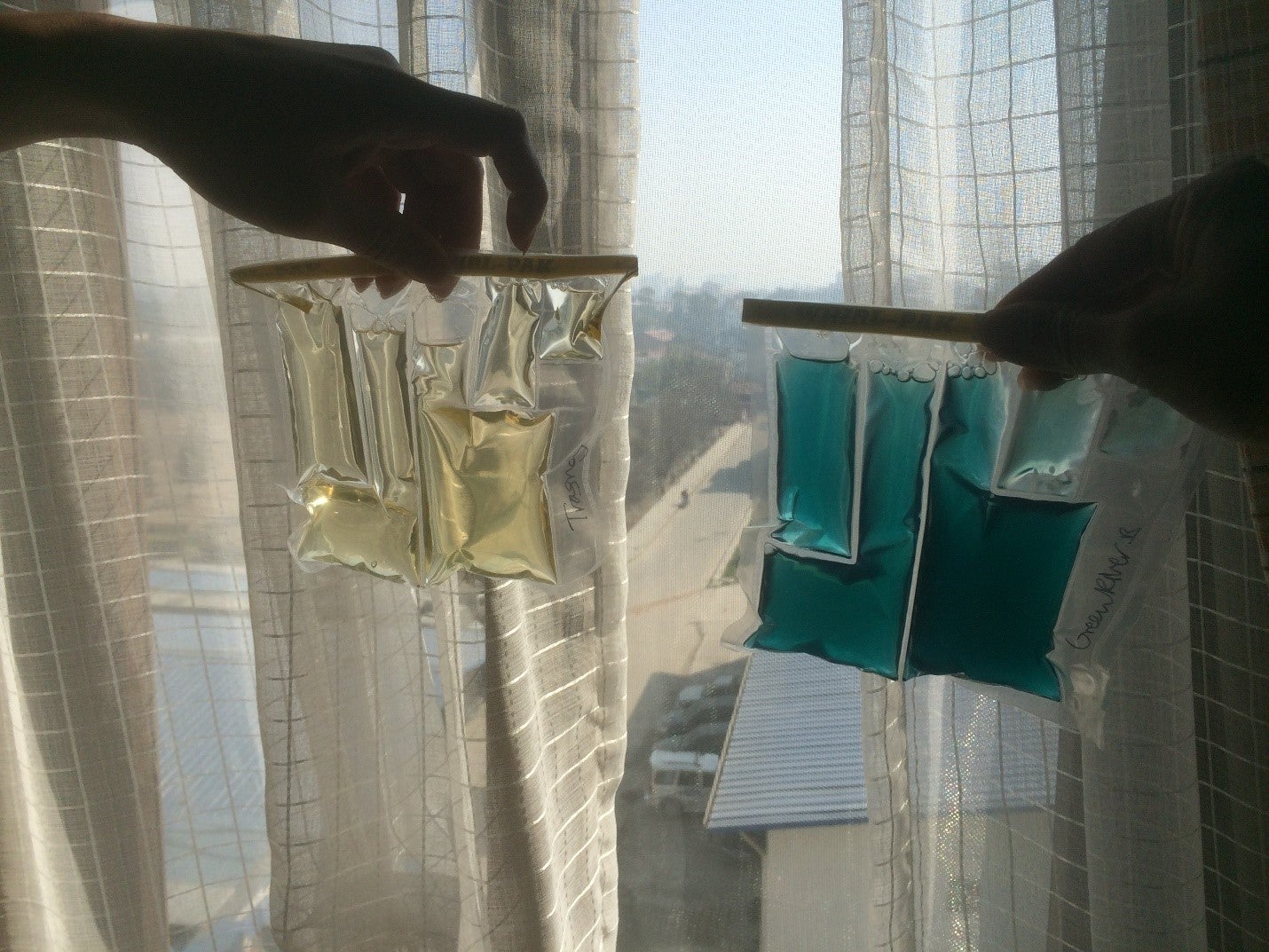
using a most probable number approach.
Photo credit: National Snow and Ice Data Center
Water quality is central to the challenge of ensuring safe water for all. Here we present the third entry in a three-part blog series on low-cost, low-tech water quality testing. In previous posts, we discussed options for measuring physical and chemical aspects of water quality. In this final post, we explore low-cost, low-tech options for microbial testing.
Microbial testing is arguably the most important factor when monitoring the quality of drinking water. Without noticing anything strange, a single glass of cool, refreshing water could contain billions of microorganisms. Just a few dozen of these organisms could be enough to make you very sick.[1] According to estimates from the World Health Organization, diarrheal disease from contaminated drinking water causes more than half a million deaths annually.[2]
The holy grail
In a
recent presentation, Dr. Mark Sobsey, of the University of North Carolina at Chapel Hill, outlined the ideal characteristics of a microbial test for water quality monitoring on a limited budget:
It should be portable, low-skill, self-contained, lab-free, and electricity-free. It should be available globally at a cost of less than $0.10 (USD) per test, and it should be easy to interface with data reporting and communications technologies. It should also be integrated into education programs to mobilize stakeholders. To this we might add that (semi)quantitative results should be available quickly, without a 12 (24, 48, etc.) hour incubation period.
This “holy grail” test does not yet exist.
Waterborne viruses, protozoa, and helminths (worms) can all be harmful to human health. However, testing for a large number of different pathogens is infeasible. A more practical solution is to test for an “indicator organism,” which acts as a sign of fecal contamination. According to the WHO Guidelines for Drinking Water Quality, Escherichia coli (commonly abbreviated as E. coli) is the preferred indicator organism. [3] The target concentration is 0 organisms per 100 mL sample.
The substitutes
There are a large number of microbial testing options available today, but they are not perfect. Selective media and enzyme-based assays that detect
E. coli’s beta-glucuronidase enzyme are often well-suited for low-resource settings.
[4] Overall, these microbial water quality tests take one of three approaches:
- Presence-absence (P-A): P-A tests don’t provide quantitative information about microbial water quality. Instead, they change color to tell you whether or not microbial contamination has been detected. Test kits are comparatively inexpensive, but often involve adding a powdered nutrient mixture and allowing a 24-hour incubation period for organisms to grow. P-A tests are suitable for screening in situations where microbial contamination is not expected (e.g., deep groundwater).
- Most probable number (MPN): MPN tests are semi-quantitative. Several samples of the same water are tested in tubes, plastic bags, or small plastic plates with multiple “wells.” The user adds a nutrient solution (“culture media”) and waits 12-48 hours for organisms to grow before counting the number of positive samples, indicated by a color change. The user then converts that number of positives to a statistical estimate of bacterial concentration, as per the instructions for the particular test.
- Membrane filtration: Membrane-based tests are the most quantitatively accurate. In general, a 100 mL water sample is forced or vacuumed through a small, round filter paper (the membrane) using a little hand pump. All the bacteria in the sample are caught on the filter as the water passes through. The filter is then incubated with some sort of culture media. Each bacterium caught on the filter will multiply into a little colony. After the incubation, the user counts the colonies – possibly with the aid of a magnifying glass – to determine how many “colony-forming-units” were present in the original 100 mL sample. Due to the filtration step, membrane-based tests are more difficult when water samples contain a lot of suspended material, and they can take a bit of time.
As previously mentioned, the “holy grail” of microbial testing does not yet exist, and all of the currently-available testing options have drawbacks. Fortunately, researchers are working on the problem from a number of angles, including immunogenic, chemical, and molecular approaches. These efforts to advance low-cost, low-tech microbial testing are essential. The harmful – even deadly – effects of waterborne disease are felt across the developing world, particularly by the most vulnerable people. Advances in microbial testing will make it easier to meet the challenge of safe water for all.
Thank you for following along in our water quality testing series!
Additional resources
- The Center for Affordable Water and Sanitation Technology publishes a great Introduction to Drinking Water Quality Testing. The free PDF contains guidelines, procedures, recommendations, and over 150 pages of technical sheets for different water quality testing products.
- WaSHMEL has published a summary “catalog” of microbial drinking water tests for low- and medium- resource settings.
- mWater maintains a page with information about the low-cost microbial water quality tests that they have direct experience using.
- IndiaWaterPortal has a three-part blog entry on water quality testing kits, including a downloadable chart with details on locally-available products and manufacturers.
- In 2005, UNICEF evaluated water quality field test kits in the Indian market.
- The WHO Guidelines for Drinking Water Quality provide a comprehensive overview of methods for the chemical water quality parameters for which WHO standards exist.
- UNICEF’s Handbook on Water Quality contains information about specific test technologies.
- UNICEF produced an implementation handbook, Rapid Assessment of Drinking Water Quality, with guidance on quality control and data analysis.
- For an example of a water quality monitoring initiative that included local testing products, see the 2011 WaterAid Nepal report Water Quality Standards and Testing Policy, available on the Nepalese government’s website.



Join the Conversation